Roasting of coffee beans: the relationship between roasting degree and acidity the difference between shallow baking and deep roasting
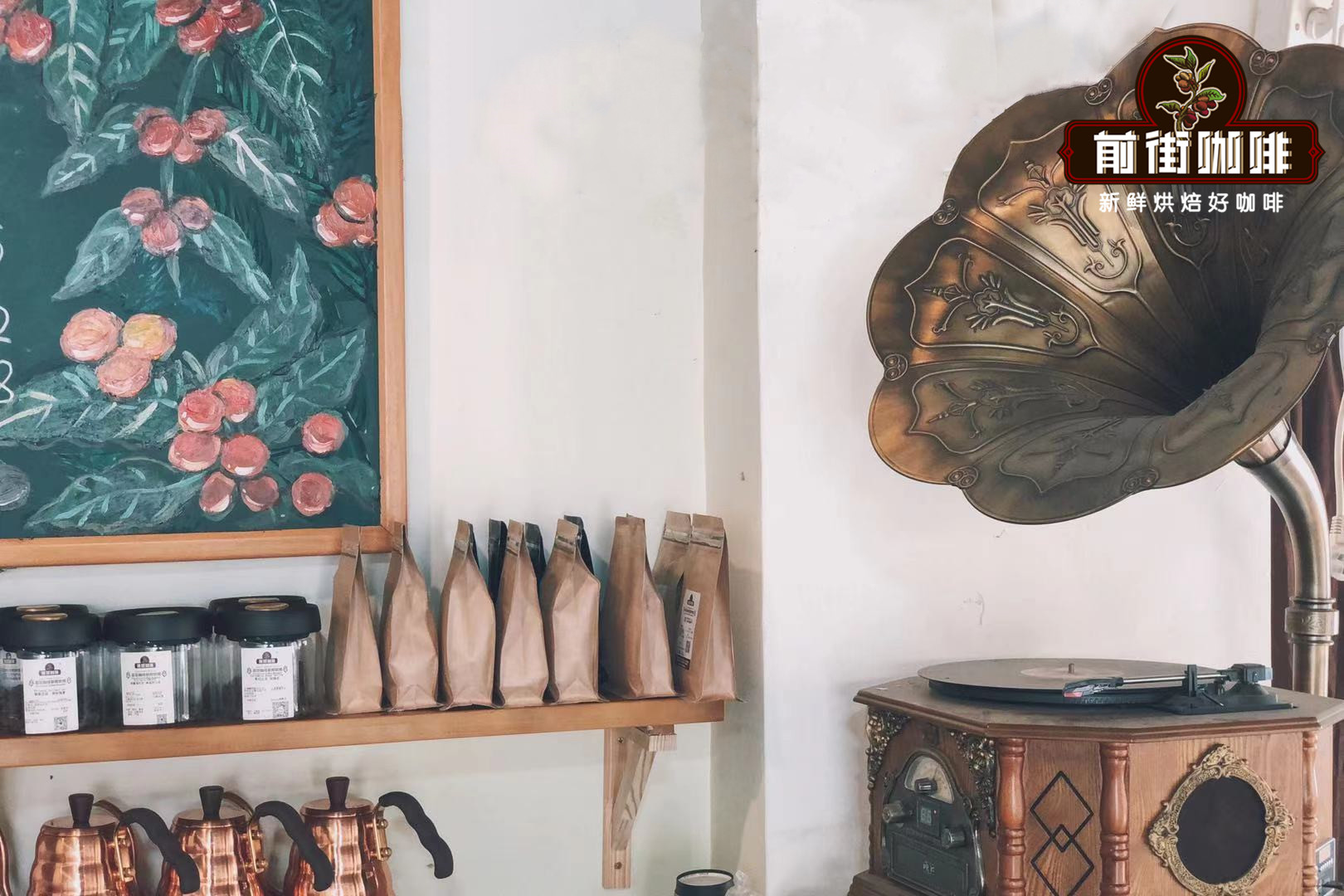
Professional coffee knowledge exchange more coffee bean information please follow the coffee workshop (Wechat official account cafe_style)
Guide reading
The taste of coffee comes from various factors, such as the planting conditions of the place of origin, the variety of coffee, the way of treatment and so on. Finally, the roaster bakes the raw beans of coffee into ripe beans, and the flavor and degree of roasting will affect the final taste of coffee.
Roasting can be said to be one of the most important factors affecting the taste of coffee, and the same bean will form a different flavor experience by roasting to different depths. How does roasting affect coffee? Does the degree of roasting affect the acidity of coffee?
First
How do you divide the degree of baking?
In the coffee roasting process, coffee beans will experience dehydration, yellowing and then to one explosion, one explosion density, if you continue to roast, there will be a second explosion, a second explosion density, and so on. Looking through different materials, you will find different expressions about the degree of baking. at this time, we introduce the concept of an Eiger value.
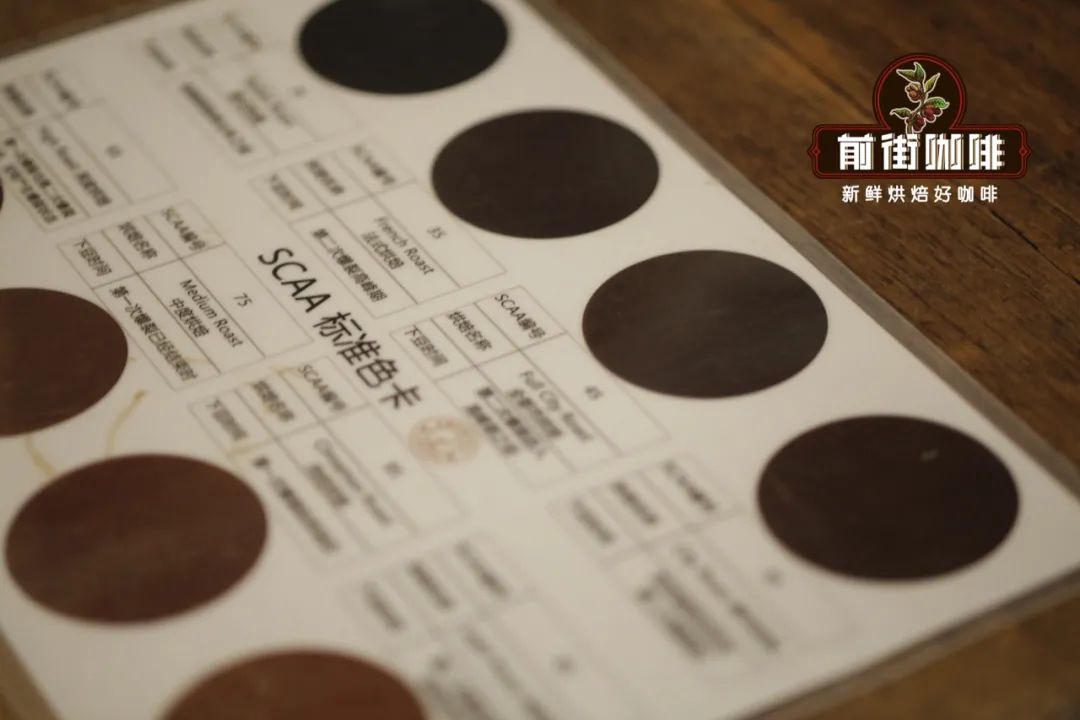
The American Fine Coffee Association SCAA uses infrared caramelization tester technology (Agtron) to measure the color of coffee beans to reflect the roasting degree of coffee, and divides the color from light to deep into eight equal parts into eight standard color blocks, which can be used by the coffee industry as the determination of roasting.
Agtron color value # 95: light baking (Light Roast)
Time to drop beans: the density of explosion is coming to an end.
Agtron color value # 85: cinnamon baking (Cinnamon Roast)
Time to drop beans: before and after the end of the explosion
Agtron color value # 75: medium baking (Medium Roast)
Time to drop beans: after the explosion is over
Agtron color value # 65: deep baking (High Roast)
The time of dropping beans: the quiet period between the first explosion and the second explosion
Agtron color value # 55: urban baking (City Roast)
Time to drop beans: the second explosion begins.
Agtron color value # 45: city-wide baking (Full City Roast)
Time to drop beans: before the second explosion is dense.
Agtron color value # 35: French baking (French Roast)
Time to drop beans: when the second explosion is dense
Agtron color value # 25: Italian baking (Itatian Roast)
Time to drop the bean: the oil begins to seep out of the bean surface
Although there are still loopholes in this set of standards, we have to admit that the Eiger value is still a valuable method to detect the degree of baking.
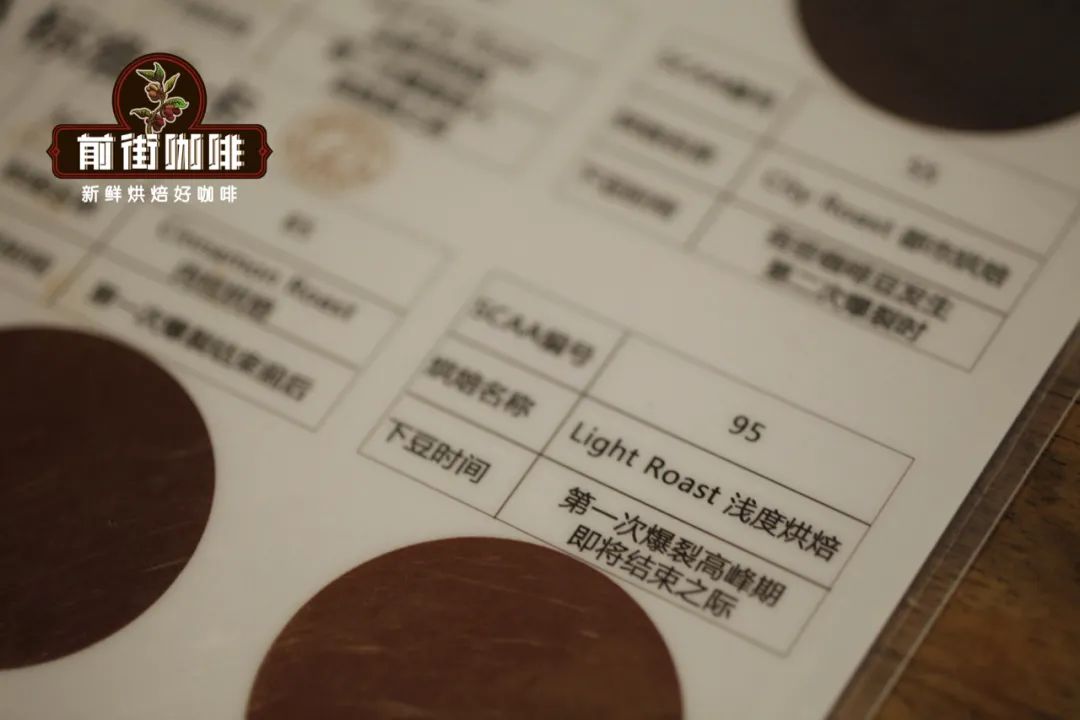
With this set of Eiger numbers, we can see how coffee performs at different levels of roasting. Will the acidity of coffee vary with different degrees of roasting?
Effect of roasting degree on acidity of Coffee
Qianjie Coffee measured the Eiger-shaped values of several coffee beans with different roasting degrees, and then tested the cups. The front street sampled Ethiopian water-washed fruit Tintin cooperative, Honduran sherry bucket coffee, washed blue mountain coffee and golden manning coffee.

Qianjie Coffee measured the Eiger values of four coffee beans through the Eiger value tester, including 80.8 for washed Yega Shirley, 78 for Honduran Shirley barrels, 65.4 for Blue Mountain Coffee and 61 for Golden Manning.
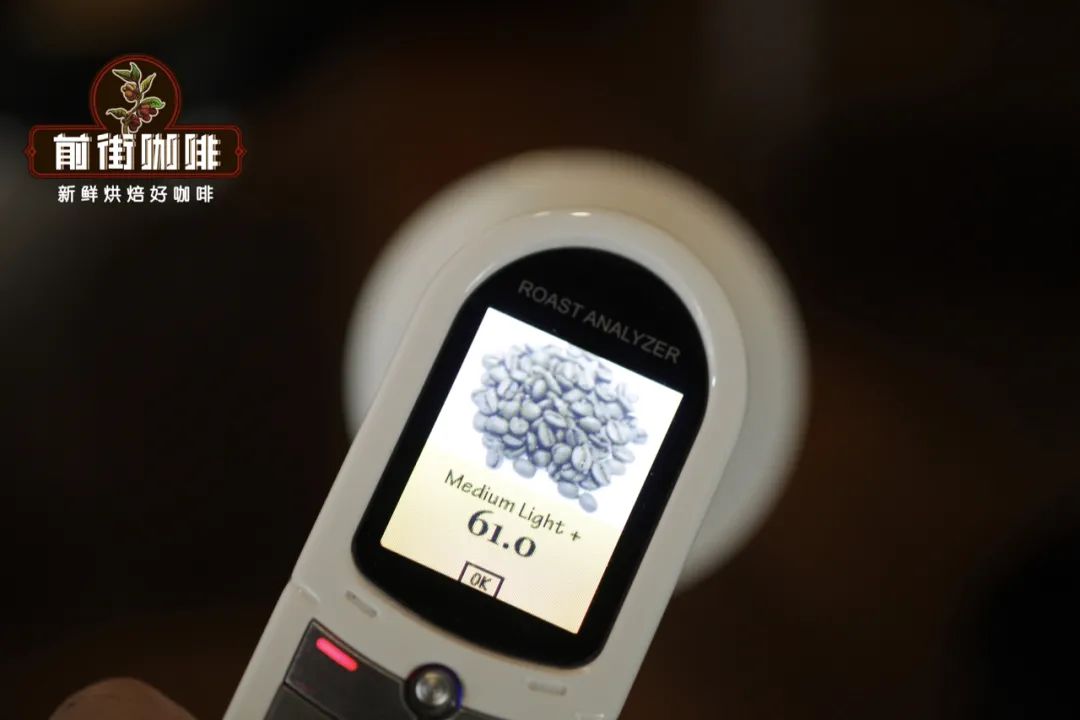
Then four coffee beans were tested respectively. Qianjie Coffee believes that the cup test belongs to the extraction method with the least human factors, which can best reflect the taste of the coffee bean itself. By sipping atomized coffee liquid, we can better judge the factors of coffee. Finally, we found that the order of acidity from high to low was washed Yega Sherfield > Shirley barrel coffee beans > washed Blue Mountain Coffee > Golden Manning.
So it is not difficult to know that the degree of roasting of coffee will affect the acidity of coffee to a certain extent, the deeper the roasting degree, the less acidity of coffee. This is because bitter substances, such as chlorogenic acid lactone and phenyllindane, are gradually produced during the baking process, and these products become more and more as they are baked, especially after the second explosion.
For many guests who don't like acidity, Qianjie Coffee always recommends deep-roasted Mantenin coffee, while guests who like sour fruit are more likely to recommend lighter roasted beans, such as washed Yega Chuefei or Kenya.
For more boutique coffee beans, please add private Qianjie coffee on Wechat. WeChat account: kaixinguoguo0925
Important Notice :
前街咖啡 FrontStreet Coffee has moved to new addredd:
FrontStreet Coffee Address: 315,Donghua East Road,GuangZhou
Tel:020 38364473
- Prev

Ethiopian Coffee | Flavor characteristics and Classification of Ethiopian Yega Snow Coffee
For more information on coffee beans, please follow the coffee workshop (Wechat official account cafe_style) [product name]: Ethiopia Yirgacheffe, Ethiopia [quality rating]: WP Grade 2 [roasting degree]: recommended moderate roasting degree (Medium Roast or City Roast) [Grade]: excellent [granules]:
- Next
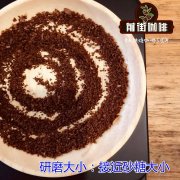
How to choose sour coffee beans _ which coffee beans taste sour _ how to flush sour coffee beans
Professional coffee knowledge exchange more information about coffee beans Please follow the coffee workshop (official Wechat account cafe_style) it is generally believed that raw beans determine 80% of the taste of coffee, while the remaining 20% are determined by roasting. The most important thing is the degree of baking. Beans overroasting coffee will only highlight the bitter taste; under-roasting will make it too sour. According to the characteristics of beans, master stop
Related
- Detailed explanation of Jadeite planting Land in Panamanian Jadeite Manor introduction to the grading system of Jadeite competitive bidding, Red bid, Green bid and Rose Summer
- Story of Coffee planting in Brenka region of Costa Rica Stonehenge Manor anaerobic heavy honey treatment of flavor mouth
- What's on the barrel of Blue Mountain Coffee beans?
- Can American coffee also pull flowers? How to use hot American style to pull out a good-looking pattern?
- Can you make a cold extract with coffee beans? What is the right proportion for cold-extracted coffee formula?
- Indonesian PWN Gold Mandrine Coffee Origin Features Flavor How to Chong? Mandolin coffee is American.
- A brief introduction to the flavor characteristics of Brazilian yellow bourbon coffee beans
- What is the effect of different water quality on the flavor of cold-extracted coffee? What kind of water is best for brewing coffee?
- Why do you think of Rose Summer whenever you mention Panamanian coffee?
- Introduction to the characteristics of authentic blue mountain coffee bean producing areas? What is the CIB Coffee Authority in Jamaica?

